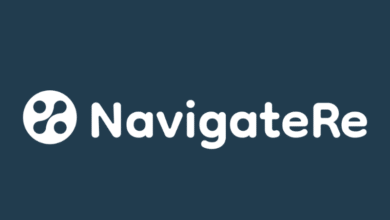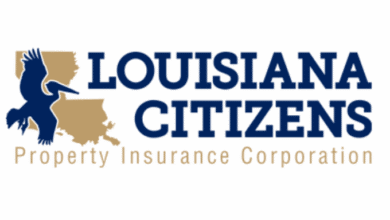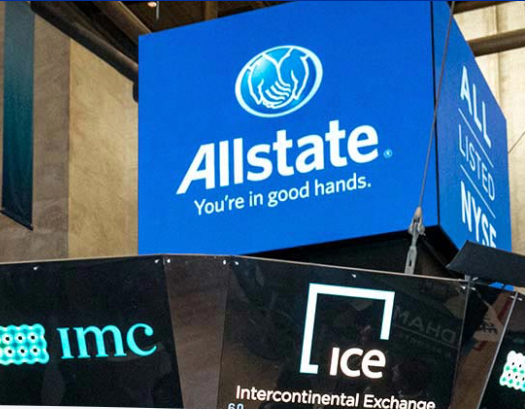A.I. Can Fix Everything In Insurance – Insurance-Canada.ca
By Stephen Applebaum and Alan Demers —
Every time I read an article or a marketing piece espousing the astounding power of AI as applied to insurance, I cannot help but think about Gus Portokalos. As you may recall, Gus was the bride’s father in the 2002 hit movie My Big Fat Greek Wedding who famously suggests “Put some Windex on it!” as a solution to all manner of problems, including cuts and scrapes. Gus proudly related every word, phrase and meaning back to his Greek ancestry as a solution or fix to each conversation. A lot of people are treating AI in the same fashion.
Even the typically thoughtful Bill Gates recently gushed that AI is “the first technology that has no limit” and that it “could be as revolutionary as the internet or mobile phones.”
Claims
Insurance is just one of virtually every industry that stands to gain in efficiency and operational cost reduction among other benefits of AI. Claims is one of those areas eyed for more efficiency, greater accuracy, and better customer experience despite some of the negative implications of a machine denying claims, and associated efforts to ban such usage. Particularly sensitive and controversial use-cases are for direct customer interaction, even for loss intake, known as ‘FNOL’ (First Notice of Loss) which is highly manual and would have tremendous ROI.
FNOL
FNOL is where each claim begins in the cycle. In fact, timely reporting is a key condition of the insurance contract. The claim reporting process is part interview, part explanation in which customers are asked a series of questions in order to capture when, how and what happened to who(m). Once this information is gathered and keyed into the system an assignment(s) is made to one or more adjusters where the process unfolds.
Prior to the development of today’s call centers, claims were reported individually by local agents filling out ACORD forms and mailing them onto the insurance company. Fast-forward, these insurance call centers have been optimized with numerous technologies that identify and queue callers, manage workflow and workloads and even detect customer sentiment through voice analysis. Some have leveraged outsourcing and off-shore resources but mostly on a limited basis such as after-hours and overflow support. Overall, the industry has demonstrated limited desire to fully automate FNOL, prized as the golden moment-of-truth where a live service representative can gather information and provide an empathetic, caring touch.
Digital FNOL options are slowly gaining, yet the massive, human-centric call centers still exist and carriers remain cautiously conservative about disruption. Although this is changing because of evidence that conversational AI can perform much of the loss reporting process more accurately. New entrant insurtechs like Lemonade were built as digital first, bypassing the call center concept but are true outliers compared to their incumbents.
The P&C insurance industry written premiums just crested the $1Trillon for the first time per S&P with some 8% or greater growth in the next two years according to AM Best. Claims account for roughly $600B not including the cost to manage claims which is upwards of another $100B. Given these financial realities it is easy to see both the challenge of getting things right and the huge potential to streamline and lower costs.
Chatbots
Chatbots have been around for several years and although still relatively early stage in sophistication, consumers are rightfully impatient with partial or pre-programmed support. Voice systems that misunderstand responses are mocked as a punchline – “Did you say statement balance? I said representative!” Although not all bots are created equal, with some quite impressive, their limitations have been in the way for insurers and left to industries like telecom which are notoriously known for lesser service and where choice is not a priority. AI promises to eliminate chatbot limitations making for human-like conversations.
Still, the concept of phone call claim reporting to essentially provide information in a 15 to 20-minute conversation or longer has become an atypical experience in today’s world. Imagine Amazon taking orders by phone only to have a call back a day later to take payment and shipping information. That is essentially the P&C industry’s method of claim reporting. Call in the claim today and an assigned adjuster calls back tomorrow – give or take a few hours or a couple days. This is a mindset, outdated process, and a technology failure.
Balancing Efficiency and Empathy; One Size Does Not Fit All
There is an ongoing debate about human touch and technology with the two camps divided on what policyholders really want. This is often applied in a blanket approach devoid of recognizing the huge variance in claim type scenario ranging from a minor fender bender to a fatality, theft of a single item to an injured worker. Regardless, its one-size-fits all when it comes to FNOL with the loudest voices protecting the virtues of a caring human, ready to help console callers. Valid as this approach might have been over the years, demographics and so-called liquid or multi-channel experiences where consumers interact differently with modern systems in one setting and expect similar in others should not be ignored. Nor should empathy be a substitute for an inefficient customer experience.
Meanwhile, AI is getting a lot of attention and insurers are cautiously eager to reap the benefits. Surveys show insurer C-Suites as bullish on AI and studies suggest more than half of all jobs can be automated but fear of data privacy, litigation, regulation and AI’s mysterious power has restrained the industry. Some states are moving to ban the use of AI in claims denials which seems premature and is designed to address the exception since most claims are covered and paid. Consequently, AI co-pilot and assistant models have become popular and safer concepts.
GenAI
GenAI has gained traction as a way forward because of proven efficiency gains in summarizing documents, reports, email, and other information, focused on internal insurance process. A recent report by Allstate demonstrated that GenAI letters were considered superior and more empathetic as compared to human authored, questioning the whole human vs technology paradigm. In fact, this example highlights the deeper issues around competence, confidence and other factors that can make or break an experience.
Conversational AI
So, should we think of AI making everything better in insurance? Conversational AI is amazing technology, enabling two-way dialog facilitating real questions and answers. Several of the conversational FNOL demos and recorded scenarios are mind blowing whether applied to gather partial information or an entire claim report. Companies like HiMarley, which advanced communications in texting and claim guidance, are advancing with conversational FNOL. Liberate Voice AI is another such provider and is likewise revolutionizing claim intake. Still, others like Interactions which uses technology and human assist in the background and Assured which offers structured digital claim intake tools are others among many more emerging in the FNOL space.
The use cases are boundless given the many variations and complexities of insurance processes and the immense volume of associated data, structured and unstructured, and the high number of external integrations. While the bulk of these processes are relatively simple and straightforward, and therefore lend themselves well to AI automation, a smaller but meaningful number are complicated and require extensive specialized experience, judgement and empathy which are less well suited to AI automation alone. At least this is current thinking and subject to those bold enough to push forward and prove otherwise.
Harnessing AI Superpowers
There is no question of whether AI can improve insurance but rather which functions, how extensively and when.
In a recent interview with The New York Times, Reed Hastings, a co-founder of Netflix stated that “The A.I. change, I think, will be much bigger than the social networking change. Reflecting as much caution as enthusiasm about AI, Hastings recently gifted $50 Million to his alma mater, Bowdoin College to launch the ‘Hastings Initiative for AI and Humanity’ and become a leader in studying the consequences, and guiding beneficial uses, of artificial intelligence.
As with the greatest man-made inventions that have shaped human history, including the wheel, printing press, electricity, airplane and internet, AI is likely to drive unimaginable benefits, innovation and unexpected consequences. Unlike these earlier advances however, AI may the first man-made invention that threatens its creators. We have been warned!
About the Authors
Stephen E. Applebaum, Managing Partner, Insurance Solutions Group, is a subject matter expert and thought leader providing consulting, advisory, research and strategic M&A services to participants across the entire North American property/casualty insurance ecosystem focused on insurance information technology, claims, innovation, disruption, supply chain, vendor and performance management. Mr. Applebaum is also a Senior Advisor to Waller Helms Advisors. WHA is the premier investment banking boutique focused on the crossroads of the Insurance, Healthcare and Investment Services sectors.
Stephen is a frequent chairman, guest speaker and panelist at insurance industry conferences and contributor to major insurance industry publications and has a passion for coaching, mentoring, business process innovation and constructive transformation, applying disruptive technology, and managing organizational change in the North American property/casualty insurance industry and trading partner communities. He can be reached at [email protected].
Alan Demers is founder and president of InsurTech Consulting LLC, with 30 years of P&C insurance claims experience, providing consultative services focused on innovating claims. After initiating and leading claims innovation at Nationwide, Demers collaborates in the forefront of InsurTech, partnering with insurance leaders, startups, design thinking experts and service providers to modernize personal, commercial and specialty claims.
As Vice President of Claims Innovation at Nationwide, Alan conceptualized a vision and road map to build next-generation claims, automating and digitizing claims experiences, progressing from inception through prototype testing. He served as a founding member of the Corporate Innovation Council and played a key leadership role in establishing goals, practices and an innovative culture at Nationwide.
Alan is an accomplished executive leader and has worked for two separate Fortune 100 insurance companies in a number of corporate, national and regional leadership roles among personal, commercial, non-standard and specialty lines claims. Prior to leading claims innovation, he served as head of claims for Nationwide’s commercial agribusiness and non-standard claims. Other noteworthy roles include: field vice president, regional claims officer and national catastrophe director, quality assurance director.
Alan began his career with Aetna as a claim adjuster and advanced to a corporate claim consultant, prior to joining Nationwide in 1995.



